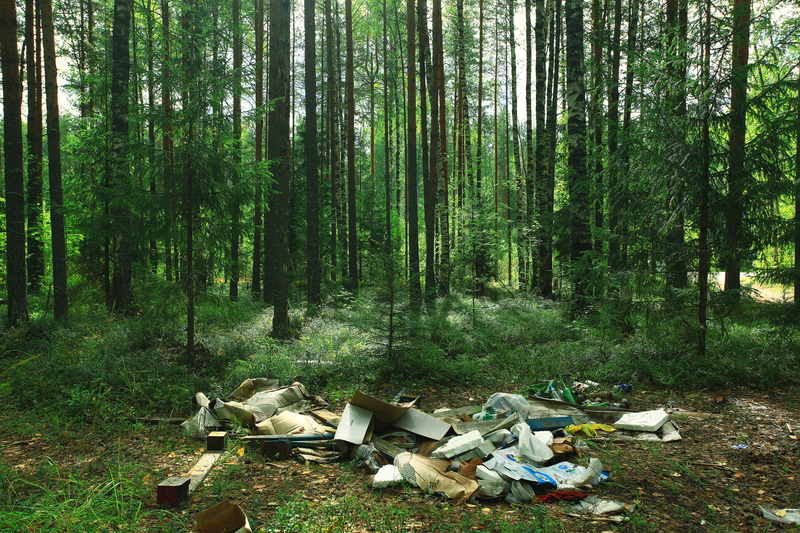Cutting Waste at Home: Easy and Impactful Tips
Cutting waste at home is more than just a trend--it's a critical part of creating a healthier environment, saving money, and fostering sustainable living. With growing concerns about environmental pollution and the increasing demands on our planet's resources, reducing household waste has never been more necessary. This comprehensive guide provides easy, impactful, and practical tips to help you and your family minimize waste at home while making a positive difference to the world around you.
Why Focus on Cutting Waste at Home?
Every year, households generate millions of tons of waste, much of which ends up in landfills, polluting our land, water, and air. By reducing common household waste, you can:
- Conserve valuable resources such as water, energy, and raw materials
- Lower your carbon footprint
- Reduce landfill contributions
- Save money on weekly essentials
- Encourage healthier, more mindful living

Top Tips for Reducing Waste at Home
1. Practice Smart Shopping Habits
- Buy Only What You Need: Impulse purchases lead to excessive waste. Make shopping lists and stick to them to cut home waste and save money.
- Choose Products with Minimal Packaging: Prefer items sold in bulk or with recyclable/compostable packaging.
- Bring Reusable Bags: Reduce single-use plastic bags by always carrying reusable totes and produce bags.
2. Organize Your Kitchen
The kitchen is a hotspot for excess waste. Here are some ways to make your kitchen more eco-friendly:
- Use Reusable Containers: Store leftovers and dry goods in glass jars, silicone bags, or other reusable containers instead of plastic wrap or single-use bags.
- Compost Food Scraps: Set up a compost bin for fruit and veggie peels, coffee grounds, eggshells, and more, diverting organic matter from landfills.
- Embrace Meal Planning: Plan ahead to ensure food is eaten before spoiling, cutting household food waste.
3. Maximize Recycling Efforts
Proper recycling is essential in any plan to cut home waste, but knowing what and how to recycle makes a difference:
- Know Your Local Rules: Ensure you're putting the right materials in the right bins to help recycling facilities process your waste correctly.
- Rinse Containers: Clean food and drink packaging before recycling to avoid contamination.
- Recycle Beyond the Curb: Many stores or community centers accept electronics, batteries, textiles, and plastic bags for recycling.
4. Switch to Reusables
Swapping disposables for durable, reusable products is an easy and effective way to cut home waste.
- Water Bottles and Coffee Cups: Carry a reusable bottle and cup instead of buying single-use beverages.
- Cloth Napkins and Towels: Replace paper towels and napkins with washable cloth alternatives.
- Rechargeable Batteries: Invest in rechargeable batteries for electronics and children's toys.
- Reusable Razor and Menstrual Products: Consider safety razors and menstrual cups or cloth pads instead of disposables.
5. Repurpose and Upcycle
Turning potential waste into useful items is both creative and sustainable:
- DIY Cleaning Rags: Cut up old t-shirts or towels for cleaning cloths.
- Reimagine Containers: Use glass jars for food storage, vases, or organizers.
- Creative Fabric Projects: Transform old clothes into quilts, bags, or pet beds.
6. Reduce Paper Use
- Go Digital: Switch to electronic billing and subscriptions.
- Unsubscribe from Junk Mail: Use online services to remove your address from mailing lists.
- Double-Sided Printing: When printing is necessary, use both sides of the paper.
7. Green Cleaning Solutions
Store-bought cleaning supplies often come in single-use plastic and may contain harmful chemicals.
- DIY Cleaning Products: Make your own with ingredients like vinegar, baking soda, and lemon.
- Bulk Buying: Purchase cleaning products in larger quantities to reduce packaging waste.
- Refill Stations: Many stores now offer refills for soap, detergent, and cleaners.
8. Donate or Sell Items
- Clothing and Housewares: Donate gently used items to charities or shelter organizations instead of throwing them away.
- Online Marketplaces: Sell unwanted gadgets, furniture, or toys on local online groups, reducing landfill waste.
9. Grow Your Own Food
Even a small herb garden in your kitchen window can help cut food packaging waste and provide fresh ingredients.
- Compost to Nourish Plants: Feed homegrown herbs and veggies with your composted food scraps.
- Preserve the Harvest: Freeze, can, or dry surplus produce to eliminate spoilage.
10. Make Smart Technology Choices
- Energy-Efficient Appliances: Reduce both energy use and electronic waste by choosing appliances with a good energy rating.
- Repurpose Old Devices: Use old smartphones as security cameras, music players, or digital frames instead of discarding them.
Setting Up a Home Waste Management System
Establishing an organized home waste system can greatly enhance your efforts to reduce waste at home.
- Separate Bins: Label bins for recycling, composting, and landfill waste to streamline disposal.
- Educate Family Members: Get everyone involved--especially kids--by explaining the importance and basics of waste sorting.
Small Changes, Big Impacts
Adopting even a few of these waste-cutting tips at home can result in noticeable changes:
- Reduces the amount of garbage sent to landfills.
- Preserves the environment for future generations.
- Lowers grocery and utility bills.
- Builds eco-friendly habits for life.
FAQs on Cutting Household Waste
What is the easiest way to start cutting waste at home?
The simplest step is to cut single-use items--bring your own bags, swap paper towels for cloth, and reuse containers. Small changes add up over time, making waste reduction at home easily achievable.
Does composting really make a difference?
Yes! Composting can reduce your trash output by up to 30%, enrich your garden's soil, and keep methane-producing organic matter out of landfills--a triple win for sustainability.
How can busy families reduce food waste?
Meal planning, storing food correctly, and using leftovers creatively help minimize unnecessary food waste. Involve kids in picking meals and prepping, so things get eaten, not thrown away.
Are products labeled "biodegradable" always better?
Not always. Biodegradable products can still be wasteful, especially if they require specific conditions to break down. Reusable, recyclable, or compostable--with proof of local processing--are often better options.

The Bottom Line: Start Cutting Waste at Home Today
Whether you adopt one tip or embrace them all, cutting home waste is a journey worth taking. Remember, perfection isn't the goal--progress is. By following these easy and impactful tips for reducing waste at home, you'll contribute to a cleaner environment, healthier communities, and a brighter future. Start today, inspire others, and celebrate every step toward a more sustainable home.